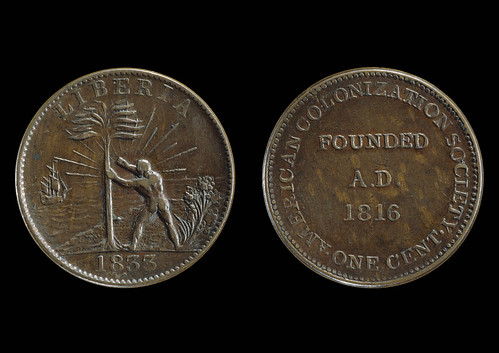By Natalie Bennett
The buzz at the British Museum just now is all around China, with the hottest tickets in town being for what’s universally known as the terracotta warriors exhibition. But it’s worth taking a little extra time to pop upstairs, to a small but powerful display on the slave trade. It aims in one small room to take in a lot, from the economics of the slave trade, on which it is academically strongest, to the echoes of slavery today, which is attracting plenty of attention from visitors for its eclectic power.
Opening and dominating is “Beyond my grandfather’s dreams”, a contemporary bronze by Fowokan George Kelly. In form and styling it is like a traditional European portrait bust, but it depicts a beautiful black woman whose face is dawn in suffering.
But then the focus moves from pain, so often often the focus with exhibitions on slavery, to the other side, all of the wealth and comfort Europeans were able to enjoy as a result of such suffering – tobacco, ivory, sugar, markets for manufactured goods that built the wealth of Victorian Britain. As Ignatius Sancho, who was born on a slave ship between West Africa and the Americas, wrote: “The grand object of English navigators – indeed of all Christian navigators — is money…”
The ways in which this trade was a complete integrated system are made clear in this exhibition. The tobacco grown by slaves in the Americas was a luxury commodity, but the lowest grade was often sent to Africa, where it might be used for buying more slaves. A similar pattern was seen with sugar: the fine products were sent to Europe but molasses, the byproduct of the dangerous refining process (boiling in huge open kettles – known as the Jamaica Train), was sent to Africa to buy more slaves. Josiah Wedgewood advocated abolition, but made beautiful sugar bowls for the luxury product, which surely helped encourage its consumption.
Chain gangs of slaves for export carried with them elephant tusks for the luxury trade in ivory. On display here are gambling tokens from London’s gentlemen’s clubs and piano keys from polite drawing rooms – some of the myriad of items into which it was made.
The exhibition does sometimes stray a little far into the politically correct and uninformative: “gold weights show the skill and craftsmanship of african metalworkers.” And it claims that African metalworking collapsed because the craftsmen were made slaves. (Surely the story is much more complex.)
Nonetheless there’s no doubt that the African market was important to European manufacturing growth. On display here a trade gun made in Birmingham in the mid-1800s, its basic wood stock and short squat barrell the forerunner of so many far more deadly weapons.
There was resistance, of course, and the exhibition also glances at that, and at the grand hopeful experiments such as Liberia and Haiti, pieces such as the coin below terribly poignant now, when we know that came after, and what continues to this day.

In that modern legacy the exhibition flicks through 20th-century apartheid, the US civil rights movement on to a 2007 bar of “slave-free” chocolate, the initiative of the dutch campaigner Teun van der Keuken.
So there’s economics and development theory here, but in the end it is impossible to get away from the pain. There’s a photo taken on the HMS Dauphne in 1868 of slaves freed by the British Navy, so clearly propaganda for the empire’s anti-slavery efforts, but in this case the camera can’t be lying.
The freed slaves’ skeletal arms, shrunken chests and puffed bellies of starvation are clearly identifiable — identifiable to us, of course, because we’ve seen the same so often in modern photos of starving African children. This is not the Hollywood depiction of slavery, which usually features strapping, muscular men. (In fact you couldn’t portray this on screen – even supermodels are not this malnourished.)
So it might be small, but there’s a lot to learn from this exhibition, about the realities of slavery, in economics, and in suffering.
Inhuman Traffic: the Business of the Slave Trade continues until April 6 in room 69a, free.
October 7, 2007 at
I was at York Castle Museum recently, and I liked the way they have integrated their exhibition on slavery (Unfair Trade) into their normal exhibits, so showing how slavery was in effect a part of everyday life in Yorkshire.